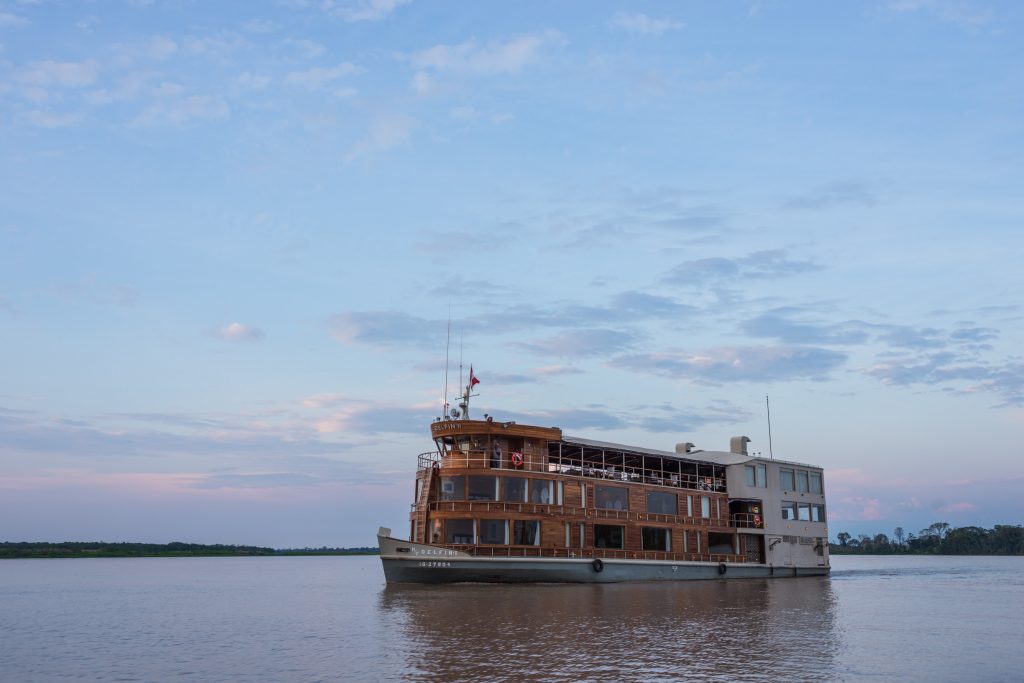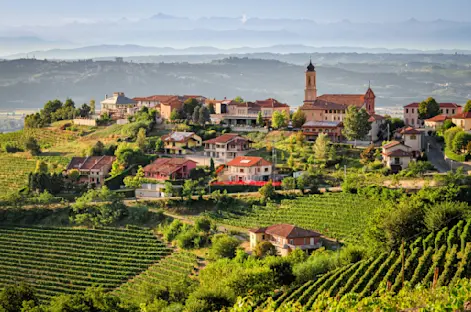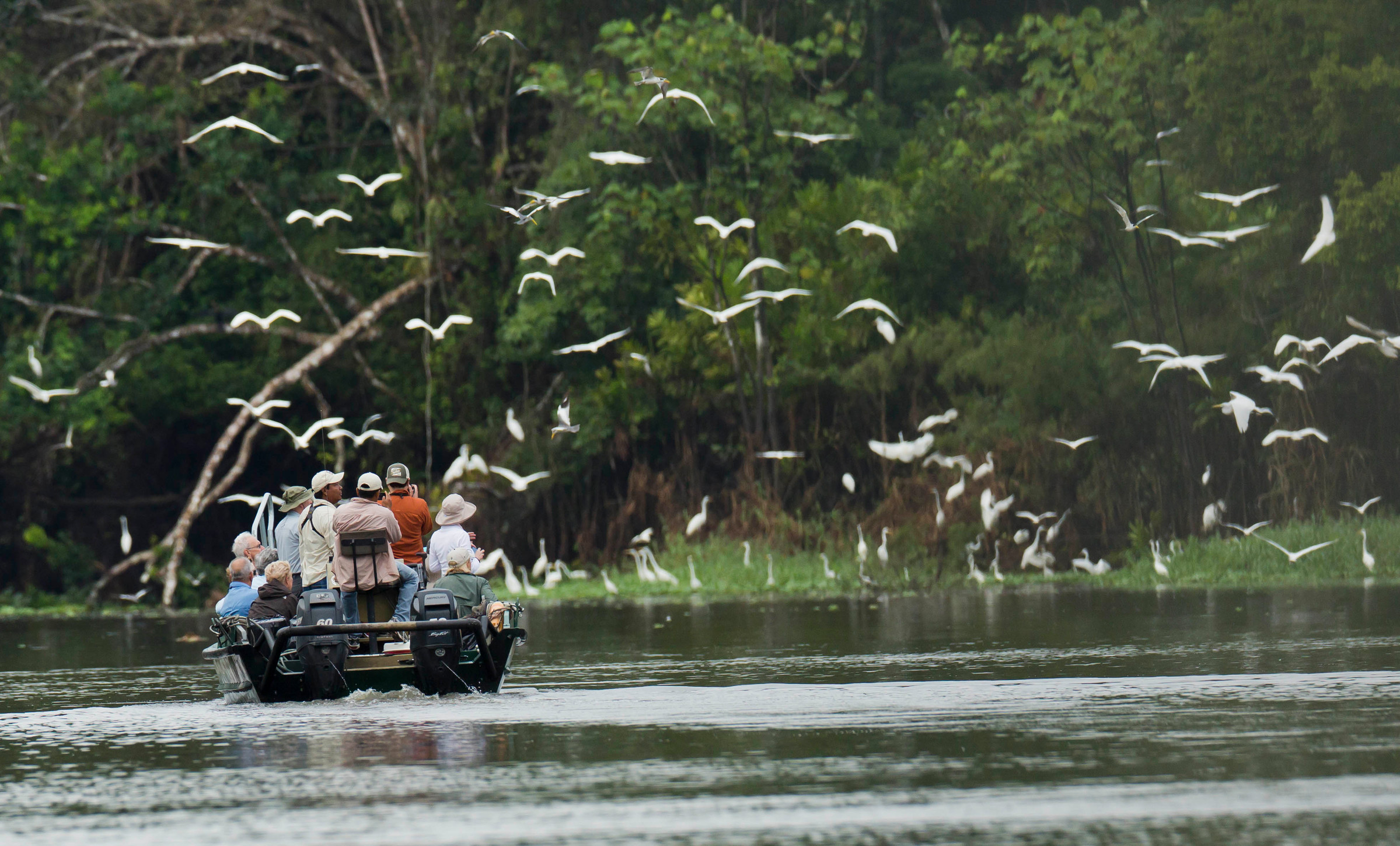For wildlife enthusiasts who travel the planet to experience unique and exciting flora and fauna, a trip deep into the Amazon Rainforest is usually high on the bucket list, alongside a Kenya safari or diving the Great Barrier Reef. Home to astonishing biodiversity, travelers to the Amazon can spot everything from stealthy caimans and pink river dolphins in the water to slinking sloths, playful monkeys and colorful macaws in the canopy. But a trip to the Amazon, especially one focused on respectfully spotting wildlife, comes with many variables to consider. Not all locations, itineraries or guides are equal, so here’s what you need to know before you go.
Where is the Amazon Rainforest?
To start wrapping your head around how massive the Amazon Rainforest is, it encompasses large areas of Ecuador, Colombia, Peru, Brazil and Bolivia. The Amazon Basin covers 2.72 million square miles—roughly the size of the 48 contiguous United States or twice the size of India—and blankets about 40 percent of the South American continent. While nearly two-thirds of the Amazon Rainforest is found in Brazil, the countries on the western edge of the Amazon Basin (Colombia, Ecuador and Peru) have the advantage of the Andes mountains. This means travelers can experience high alpine environments outside the basin along with thick, verdant jungle and wetlands where mountain runoff collects at the base. These geographical factors merge to offer a huge variety of landscapes and wildlife. Peru is a standout for wildlife viewing, as it has many large clay licks (where macaws and other birds gather to eat mineral-rich earth) and impressive wetlands that attract jaguars, anacondas, caimans and capybaras.
Best Part of the Amazon to Visit
Zoning in on where to start exploring is another variable to consider. Highly recommended for wildlife viewing is the WWF-supported Pacaya Samiria National Reserve in the Upper Amazon. It’s the largest protected area in Peru (and the second largest in the entire Amazon Basin), spanning an area of 5 million acres of wetland at the headwaters of the Amazon River, encompassing islands, creeks and dry forests as well. Pacaya Samiria holds both some of the greatest biodiversity on Earth and also some of the largest wildlife populations found in the Amazon Basin.
Best Time of Year to Visit the Amazon
The Amazon basically has two seasons. The wet season—January through June—is cooler in temperature and is when most fruits and flowers bloom, often making wildlife viewing easier. But it’s called the wet season for a reason—after all, you are in the rainforest, and rains can often be heavy. The dry season—July through December—is much drier but also significantly hotter, and wildlife can be less abundant or at least less obvious to spot among the verdant plant growth. The dry season is often a more popular time for tourism, partly due to the northern hemisphere summer travel season.

Best Way to See the Amazon
There are two primary ways to stay in the Amazon. One is at a jungle lodge. While the Amazon is filled with wildlife, it is often difficult to spot from within dense forest. The best areas for wildlife viewing are along the river’s edge, making a riverboat voyage a top option. But due diligence is essential here. Some boats are quite large (many carrying over 100 passengers), clumsy and rustic, meaning guests never experience the smaller tributaries and may have to sleep in hammocks in a communal open area. Traditional dugout canoes can get travelers close to wildlife, but these human-powered canoes move slowly and don’t make much headway for exploring vast areas. The ideal setup for wildlife viewing is a small, quiet riverboat holding no more than 30 guests, which can easily tie up at riverbanks to embark on land- or water-based excursions. The edge of a habitat, between jungle and river, is usually most productive for flowers and fruits, attracting wild animals to these areas.

Spider monkey
Animals to See in the Amazon
It’s best to set realistic expectations on what wildlife is easily spotted and which sightings are rare. Animals of the Amazon work on their own terms and don’t always come out for convenient photo shoots. Travelers on a riverboat tour are likely to spot tiny squirrel monkeys, larger spider monkeys and black-and-white capuchin monkeys. It’s probable you’ll hear the powerful morning calls of red howler monkeys, but less likely you’ll see them. Coatis and capybaras can be spotted on the ground, while the three-toed sloth is usually hanging in a tree. A boat tour is ideal for spotting the famous pink river dolphins and caimans. Animals that live in the Amazon but are not commonly seen in the wild include giant river otters, river manatees (although there are rehabilitation centers where travelers can see them), anacondas (despite what movies suggest, they aren’t lying in wait to attack unsuspecting people), and jaguars (they’re highly skilled at not being spotted). More than half the species in the Amazon are thought to live high up in the forest canopy.
Birdlife in the Amazon is abundant and spectacular, and guests should bring binoculars if possible. Visitors can often see several toucan species, scarlet macaws (frequently flying overhead but difficult to see up close), primitive Hoatzin birds with wing claws used for climbing, long-toed jacanas that walk on floating vegetation and several hummingbird species. The harpy eagle lives in the Amazon but is rarely seen. Keeping the birds of the Amazon well-fed are roughly 2.5 million insect species. Leafcutter ants are easy to find, and dazzling blue morpho butterflies frequently make appearances.
Plants to See in the Amazon
Not to be outdone by fauna, the native flora is impressive as well. The Amazon is estimated to have 16,000 tree species and 390 billion individual trees. Some standout species include the “walking” trees, which can slowly uproot and move to find more desirable soil or lighting. The largest tree species found here is the kapok, which has buttress roots supporting it in shallow soil. Palms and fig trees are important food sources for wild animals. The main showstopper is the giant water lily, Victoria amazonica, with gigantic leaves up to 10 feet in diameter floating on the water’s surface atop submerged stalks up to 26 feet long. Bromeliads and epiphytes growing on branches or trunks are common, along with a large diversity of gorgeous orchids.
Must-Pack Items for a Trip to the Amazon
Enjoyment of any Amazon trip depends on managing expectations for weather and wildlife, ensuring qualified guides, choosing a suitable itinerary, and packing correctly. Quick-dry clothing is a must—avoid heavy jeans or thick cotton clothing, as they’ll get wet and take days to dry. Pack multiple sock changes, rubber boots, comfortable walking shoes, lightweight long pants, a sunhat and sunglasses, a rain jacket, and sunscreen and insect repellent. Expect muddy trails, standing water, and rain on excursions—all part of the adventure to see some of Earth’s most diverse and vivid wildlife.
































